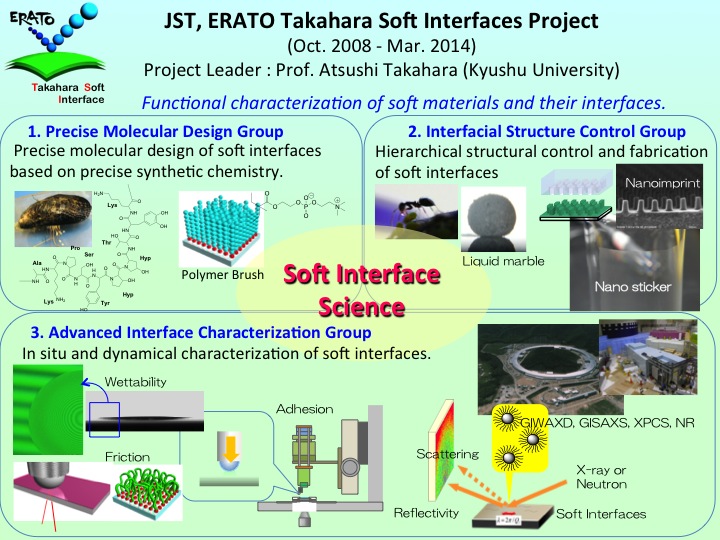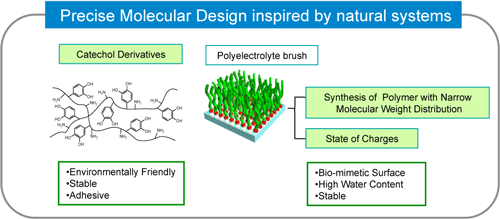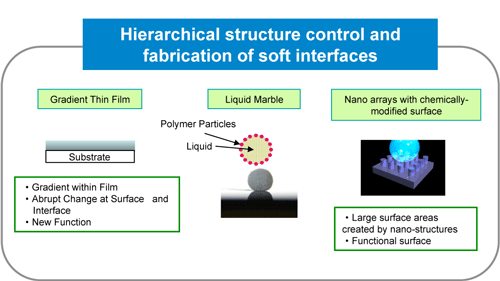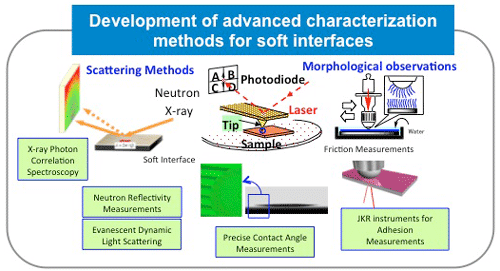Descriptions of each group
Precise Molecular Design Group
Precise molecular design of soft interfaces utilizing polymer brush of various zwitter ionic monomers and controlled preparation of novel natural thermosetting polymer thin films such as poly(DOPA) .
Interfacial Structure Control Group
Hierarchical structural control and fabrication of soft interfaces through mimic of natural systems through nano imprinting and post-surface modification technique which creates various soft interfaces with different surface energy and topography.
Advanced Interface Characterization Group
The role of the Advanced Interface Characterization Group is to develop analytical techniques for studying dynamic processes at soft interfaces. The knowledge we gain from the fundamental processes occurring at interfaces will be utilized by the other two groups to create new materials.
Our main interests lie in the field of friction, adhesion, wetting properties, and more. These are very important topics in our life, yet many remain poorly understood. To better understand these processes, we are currently working on the following techniques:
- X-ray photon correlation spectroscopy (XPCS) at SPring 8
- Neutron reflectivity at J-PARC
- Evanescent dynamic light scattering
- JKR-based adhesion tester





